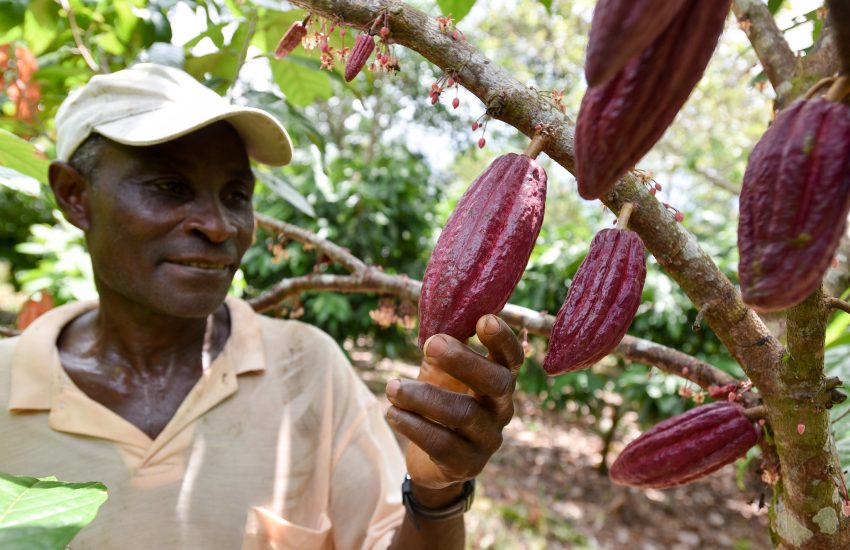Policy brief: tackling policy dilemmas for wetland restoration
08 December, 2025

Policy brief: tackling policy dilemmas for wetland restoration
08 December, 2025
Celebrating 6 years of Mobilising More for Climate
01 December, 2025
Thursday 23 june 2022
Headerfoto: Cacao growing on a farm in the Department of Guaviare, Colombia. Pic by Neil Palmer (CIAT). (CC BY-NC-SA 2.0) https://creativecommons.org/licenses/by-nc-sa/2.0/
The cocoa industry knows a number of sustainability challenges. An estimated 2 million children alone work in the cocoa sector in West Africa. Many farmers earn below a living wage. There are governance problems, such as corruption. In addition, the industry knows severe environmental issues, such as the excessive use of fertilizer and harmful pesticides. Tropical deforestation from industrial cocoa plantations is a major problem for biodiversity.
Swiss company Nestlé launched the Nestlé Cocoa Plan to build a more responsible cocoa supply chain in West Africa. This plan was launched in 2009, aiming to end cocoa deforestation, increase farmers’ income, ensure high quality cocoa and address supply chain issues such as child labor. Since 2009, 124,000 farmers have joined the program, and this has led to, among other things, a halving of child labor in the cocoa supply chain in the area. The program has also worked to provide training for smaller groups of farmers to get higher production.
But biodiversity is not yet adequately accounted for in the business operations. Most of the cocoa beans that Nestlé buys from local traders are still produced in monoculture plantations with irresponsible use of chemical fertilizers and pesticides. Nestlé Cocoa Plan has encouraged many cocoa farmers to get Rainforest Alliance certification, but these farmers do not earn a sufficient price premium from Nestlé for the extra work and investment they have to make. This means that cocoa farmers’ livelihoods suffer because of Nestlé’s low purchase prices, leaving few farmers motivated to pursue responsible cocoa farming.
Nestlé has been struggling with failing cocoa tree productivity in Ghana for over 30 years. If Nestlé does not invest in the sustainability of cocoa production methods, the company risks a shortage of cocoa beans, while contributing significantly to biodiversity loss. Therefore, Nestlé should offer cocoa farmers a higher price for their certified beans. This means that Nestlé has to dedicate more funds for this purpose.
This problem can only be solved if all stakeholders take their responsibility. Investors will have to exclude companies that do environmental damage, violate human rights or endanger threatened species. Nestlé must engage with farmers on how it will support farmers in responsible cocoa production. Consumers should only buy certified cocoa.
Download and read the full report about the biodiversity policy of Dutch insurers.

08 December, 2025
As Europe accelerates efforts to restore wetlands and riverine ecosystems in line with biodiversity and climate goals, several complex policy…
01 December, 2025
On the 2nd of December 2025 we celebrated 6 years of Mobilising More for Climate (MoMo4C). During the event, we closed the current chapter on MoMo4C, celebrated our achievements, shared insights,…